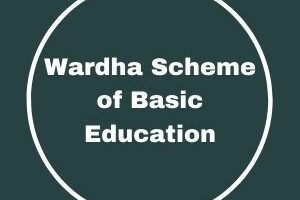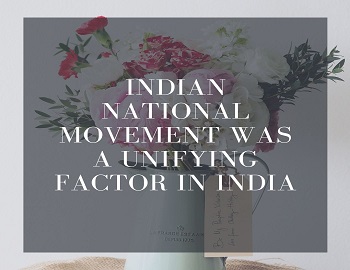Table of Contents
Pre-Gupta Period Important Facts:

Indo-Greeks:
- Demetrius was the first foreign king after Alexander who carried Greek army into India about 190 B.C. & conquered North Western part of the Mauryan Empire.
- Most famous among Indo-Greek rulers was Menander who reached Pataliputra. His capital was Sakala or Sialkot.
- He was converted to Buddhism by Nagasena or Nagarjuna & their conversation was recorded in a book, Milindapanho i.e Questions of Milinda.
- Indo-Greeks were credited with the introduction of Gold coins in India.
- Practice of military governorship (Strategos).
- The Greek Ambassador Heliodorus set up a pillar in honour of Vishnu at Vidisha in Madhya Pradesh.
- Heliocles was the last Greek King to rule over Bactria & India.
Sakas:
- The first Saka King in India was Maures or Moga with Gandhara as his capital.
- Sakas introduce Satrap system (appointing provincial governor).
- Most famous Saka king in Western India was Rudra Daman I whose Junagarh inscription (150 A.D.) records his achievements. He repaired the Sudarshan Lake of Mauryan times in the Kathiawar area.
The Parthians:
- The most famous Parthian king was Gondophernes, in whose reign St. Thomas is said to have come to India for the propagation of Christianity.
Kushanas:
- The name originally meant a tribe or people or family of the Yuch-Chis or Tocharians.
- Kujula Kadphises was the founder & he minted copper coins with Roman influence.
- Vima Kadphises started the practice of issuing coins by Indian rulers & his coins contained Siva with his long trident & the monarch himself on the other side.
- Succeeded by Kanishka, from when the Saka era begins (A.D. 78), Peshawar was his first capital & Mathura, the second.
- Kanishka was a great patron of Buddhism (Mahayana) & the Fourth Buddhist Council was held under his patronage at Kashmir or Kundalvan under the Presidentship of Vasumitra.
- Kanishka also sent missionaries to Central Asia and China for the propagation of Buddhism.
- He patronised Buddhist scholars like Vasumitra, Asvagosha and Nagarjuna.
- The famous physician of ancient India Charaka was also patronized by him.
- Succeeded by Vashishka, then Huvishka & so on & the last ruler of the Kushan dynasty was Vasudeva (220 A.D.).
Schools of Art:
Gandhara School of Art:
- This school emerged from 1st century B.C. onwards. It was not patronized by Indo-Greeks but by Sakas & Kushanas.
- Hadda & Bamiyan were main centers.
- This was a fusion of Greek & Indian styles from the very beginning. The subjects were Indian & the style was Greco-Roman. Thus the mother of Buddha resembled a Greek Goddess while Buddha himself too had an Apollo like face. Greek gods were depicted as paying obeisance to Buddha.
- The Buddha of this school is depicted with focus on bodily features such as muscular body, curly hair & semi-transparent clothes.
- Initially they used soft material such as wood & stucco. Later they began to use blue-grey stone.
Mathura School of Art:
- It was the oldest & flourished from 2nd century B.C. onwards. It was indigenous in origin & was patronized by local rulers. But later with the advent of Kushanas, foreign influence was visible clearly.
- Initial subjects were Buddha, Mahavira & Kanishka. Krishna was ignored before the Gupta period. Beautiful images of Siva as ardh-nariishwar were built. Krishna, balram & surya too were its subjects.
- The images have a deep spiritual outlook. Buddha is shown in meditation mode. Focus is not on highlighting the bodily features of Buddha but on his spiritualistic aura & content on face. Popular depictions of Buddha are in the Padmasana-mudra (sitting cossed legged & meditating) & Dharma-chakra-parivartana-mudra (giving sermons).
- They used White spotted red sandstone.
The Amrawati / Vengi School:
- It flourished from 1st century B.C. onwards in vengi, Nagarjunkonda, kurnool & krishna-godavari region.
- It was indigenous throughout & was patronised by Satavahanas, Ikshavakus & later Vakatakas.
- It made images of Buddha & brahmanical deities.
- These images are famous for their feminine beauty & sensuous appeal.
- They used white marble in their images.
Satavahanas:
- Ruled for 460 years continuously.
- Satavahanas were successor of Mauryas in Deccan & Central India.
- The kings are mentioned in the Puranas as belonging to the Andhra territory & tribe.
- Simukha was the first ruler of the dynasty with his capital at Pratishthana or Paithan on the Godavari in Aurangabad district, Maharashtra.
- Nanaghat inscription mentions Satakarni I as “Dakshinapatha-pathi“, thus implying their control over the Deccan also.
- The early Satavahana period after Satakarni I did not witness any remarkable activities except for the composition of “Gathasaptasathi” by the ruler Hala.
- Later Satavahana period beginning with Gautamiputra Satakarni was the period of their revival who defeated the family greatest rivals, sakas.
- He was called as “Ekabrahmana” in the Nasik inscription/prasasti by his mother Gautami Balasri.
- Satavahanas were the first rulers to make land grants to the Brahmanas.
Other Dynasty:
- Kharavela of Kalinga belonged to the Mahameghavahana line of the Chetis / Chedis.
- He is famous for the Hathigumpha inscription which was engraved on the Udaigiri hills near Bhuvaneshwar.
- He was a Jaina & got cave shelters excavated for the Jania monks in the Udaigiri hills.








Comments (No)